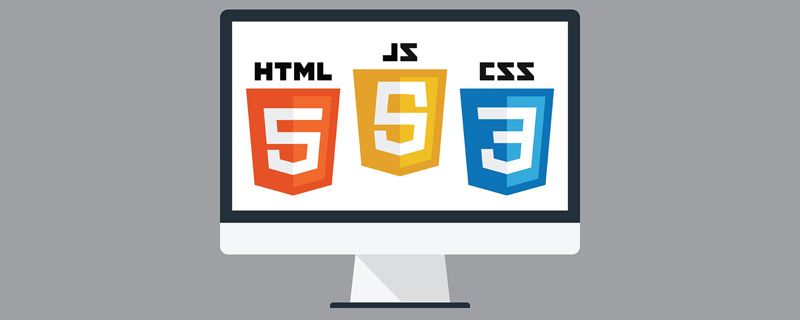This article mainly introduces the method of JS based on recursion to implement the web version of the calculator. It analyzes the steps and related operating techniques of using the recursive algorithm in JavaScript to implement the web version of the calculator in the form of examples. Friends in need can refer to the following
The example in this article describes the method of implementing the web version of the calculator based on JS recursion. Share it with everyone for your reference. The details are as follows:
Recursively implementing the web version of the calculator can simplify the code. Design ideas:
1. CSS+html implements the appearance of the calculator, giving each The button is bound to the number(z) event, and the difference in z is passed in to distinguish the button that triggered the event.
This p is placed in the body, which is the HTML of the calculator. Number() distinguishes the trigger buttons by passing in different numbers.
<p class="bg"> <p id="txt"></p> <button id="bt10" value="+">+</button> <button id="bt11" value="-">-</button> <button id="bt12" value="*">*</button> <br data-filtered="filtered"><button id="bt13" value="/">/</button> <button id="bt14" value="=">=</button> <br data-filtered="filtered"><button id="bt1" value="1">1</button> <button id="bt2" value="2">2</button> <button id="bt3" value="3">3</button> <br data-filtered="filtered"><button id="bt4" value="4">4</button> <button id="bt5" value="5">5</button> <button id="bt6" value="6">6</button> <br data-filtered="filtered"><button id="bt7" value="7">7</button> <button id="bt8" value="8">8</button> <button id="bt9" value="9">9</button> </p>
2. In the number(z) method, the innerHTML of the DOM is used to realize the real-time display of the expression, and the string content is used to store the clicked number or symbol. When "=" is clicked, Call fact(content) to calculate.
The code is as follows:
var content; //存储已点击的数字或符号,要定义成全局的,如果定义在number()中,每次content都会被重新赋值
function number(z) {
var k=document.getElementById("txt");//获取显示框的 DOM,并缓存在k中
if(z==14){//如果点击了"="号
var sum = fact(content);//调用fact()进行计算,并把结果赋值给sum
content=content+"="+sum;//在要显示的内容后加入"="和sum
k.innerHTML = content;
content = null;//将content清空,准备下次计算
}else{
//如果没有点击"="号,而是点击的运算符,就需要通过switch把数字转化成运算符
switch(z){
case 10: z = '+'; break;
case 11: z = '-'; break;
case 12: z = '*'; break;
case 13: z = '/'; break;
}
//把此时输入的字符存入content
if(content){
content+=z.toString();
}else{
content=z.toString();
}
k.innerHTML = content;//让它实时显示
}
}3. The idea of the recursive algorithm in this calculator: In fact(content), first Use content.indexOf(" ") to determine whether the " " number exists. If it exists, recursively call the two strings before and after index and add them until no strings are found. " ", start using content.lastIndexOf("-") to judge the "-" sign. The subsequent operation is the same as the plus sign. If there is one, recurse the two strings before and after the index and subtract them. Until the minus sign is not found, it starts to judge the multiplication sign and division sign, and returns parseFloat(content) until there is no sign. The content here is the unsigned string after the recursive call, and is not introduced at the beginning. parameters.
//实现递归计算
function fact(content){
var index = content.indexOf("+");//获取"+"号的index
if(index != -1){
return fact(content.substring(0,index))+fact(content.substring(index+1));
//当找得到“+”号时,分成两部分相加递归
}else{
var index2 = content.lastIndexOf("-");//当找不到“+”号时,开始找“-”号
if(index2 != -1){
return fact(content.substring(0,index2))-fact(content.substring(index2+1));
//当找得到“-”号时,分成两部分相减递归
}else{
var index3 = content.indexOf("*");//当找不到“-”号时,开始找“*”号
if(index3 != -1){
return fact(content.substring(0,index3))*fact(content.substring(index3+1));
//当找得到“*”号时,分成两部分相乘递归
}else{
var index4 = content.lastIndexOf("/");//当找不到“*”号时,开始找“/”号
if(index4 != -1){
return fact(content.substring(0,index4))/fact(content.substring(index4+1));
//当找得到“/”号时,分成两部分相除递归
}else{
return parseFloat(content);//当找不到“/”号时,返回这段串的变成float型的数值
}
}
}
}
}The above is all the code. Two points to pay attention to in the design idea are:
1. The plus sign and multiplication sign are indexOf(), and the minus sign is Use lastIndexOf() with the division sign.
For example: content="3-2-1"
If it uses indexOf(), first divide the string into fact("3" )-fact("2-1"), the first "3" is unsigned, and when calling fact recursively, it returns parseFloat("3"), and when it is followed recursively, it will become parseFloat("2")-parseFloat("1")=1, this is the return value of fact("2-1"), the final result is 2, which is equivalent to :3-(2-1).
If lastIndexOf() is used, it divides the string into fact("3-2")-fact("1"), fact("3-2")# The return value of ## is parseFloat("3")-parseFloat("2")=1, thus realizing calculation from left to right.
The division sign is the same: if content="6/3/2" uses indexOf(), it is equivalent to: 6/(3/2), because there is no order problem with the plus sign and the multiplication sign, so You can use indexOf(). 2. Multiplication and division are in the inner layer of judgment, and addition and subtraction are in the outer layer of judgment. Since multiplication and division must be calculated first, the inner judgment will first obtain the unsigned string, and they will calculate it first. What I personally think can be optimized about this calculator: (You can also think about it)1. When binding events to buttons, use the event proxy mode.2. Which properties or methods are used need to consider browser compatibility issues.
How to use vuex to implement menu management
How to use Vue to develop tree components
Detailed interpretation of the new features of Angular5.1
How to implement gulp packaging using nodejs
The above is the detailed content of How to implement a web version of calculator in JS. For more information, please follow other related articles on the PHP Chinese website!
 如何使用JS和百度地图实现地图平移功能Nov 21, 2023 am 10:00 AM
如何使用JS和百度地图实现地图平移功能Nov 21, 2023 am 10:00 AM如何使用JS和百度地图实现地图平移功能百度地图是一款广泛使用的地图服务平台,在Web开发中经常用于展示地理信息、定位等功能。本文将介绍如何使用JS和百度地图API实现地图平移功能,并提供具体的代码示例。一、准备工作使用百度地图API前,首先需要在百度地图开放平台(http://lbsyun.baidu.com/)上申请一个开发者账号,并创建一个应用。创建完成
 js字符串转数组Aug 03, 2023 pm 01:34 PM
js字符串转数组Aug 03, 2023 pm 01:34 PMjs字符串转数组的方法:1、使用“split()”方法,可以根据指定的分隔符将字符串分割成数组元素;2、使用“Array.from()”方法,可以将可迭代对象或类数组对象转换成真正的数组;3、使用for循环遍历,将每个字符依次添加到数组中;4、使用“Array.split()”方法,通过调用“Array.prototype.forEach()”将一个字符串拆分成数组的快捷方式。
 如何使用JS和百度地图实现地图热力图功能Nov 21, 2023 am 09:33 AM
如何使用JS和百度地图实现地图热力图功能Nov 21, 2023 am 09:33 AM如何使用JS和百度地图实现地图热力图功能简介:随着互联网和移动设备的迅速发展,地图成为了一种普遍的应用场景。而热力图作为一种可视化的展示方式,能够帮助我们更直观地了解数据的分布情况。本文将介绍如何使用JS和百度地图API来实现地图热力图的功能,并提供具体的代码示例。准备工作:在开始之前,你需要准备以下事项:一个百度开发者账号,并创建一个应用,获取到相应的AP
 如何使用JS和百度地图实现地图多边形绘制功能Nov 21, 2023 am 10:53 AM
如何使用JS和百度地图实现地图多边形绘制功能Nov 21, 2023 am 10:53 AM如何使用JS和百度地图实现地图多边形绘制功能在现代网页开发中,地图应用已经成为常见的功能之一。而地图上绘制多边形,可以帮助我们将特定区域进行标记,方便用户进行查看和分析。本文将介绍如何使用JS和百度地图API实现地图多边形绘制功能,并提供具体的代码示例。首先,我们需要引入百度地图API。可以利用以下代码在HTML文件中导入百度地图API的JavaScript
 js中new操作符做了哪些事情Nov 13, 2023 pm 04:05 PM
js中new操作符做了哪些事情Nov 13, 2023 pm 04:05 PMjs中new操作符做了:1、创建一个空对象,这个新对象将成为函数的实例;2、将新对象的原型链接到构造函数的原型对象,这样新对象就可以访问构造函数原型对象中定义的属性和方法;3、将构造函数的作用域赋给新对象,这样新对象就可以通过this关键字来引用构造函数中的属性和方法;4、执行构造函数中的代码,构造函数中的代码将用于初始化新对象的属性和方法;5、如果构造函数中没有返回等等。
 用JavaScript模拟实现打字小游戏!Aug 07, 2022 am 10:34 AM
用JavaScript模拟实现打字小游戏!Aug 07, 2022 am 10:34 AM这篇文章主要为大家详细介绍了js实现打字小游戏,文中示例代码介绍的非常详细,具有一定的参考价值,感兴趣的小伙伴们可以参考一下。
 php可以读js内部的数组吗Jul 12, 2023 pm 03:41 PM
php可以读js内部的数组吗Jul 12, 2023 pm 03:41 PMphp在特定情况下可以读js内部的数组。其方法是:1、在JavaScript中,创建一个包含需要传递给PHP的数组的变量;2、使用Ajax技术将该数组发送给PHP脚本。可以使用原生的JavaScript代码或者使用基于Ajax的JavaScript库如jQuery等;3、在PHP脚本中,接收传递过来的数组数据,并进行相应的处理即可。
 js是什么编程语言?May 05, 2019 am 10:22 AM
js是什么编程语言?May 05, 2019 am 10:22 AMjs全称JavaScript,是一种具有函数优先的轻量级,直译式、解释型或即时编译型的高级编程语言,是一种属于网络的高级脚本语言;JavaScript基于原型编程、多范式的动态脚本语言,并且支持面向对象、命令式和声明式,如函数式编程。


Hot AI Tools

Undresser.AI Undress
AI-powered app for creating realistic nude photos

AI Clothes Remover
Online AI tool for removing clothes from photos.

Undress AI Tool
Undress images for free

Clothoff.io
AI clothes remover

AI Hentai Generator
Generate AI Hentai for free.

Hot Article

Hot Tools

mPDF
mPDF is a PHP library that can generate PDF files from UTF-8 encoded HTML. The original author, Ian Back, wrote mPDF to output PDF files "on the fly" from his website and handle different languages. It is slower than original scripts like HTML2FPDF and produces larger files when using Unicode fonts, but supports CSS styles etc. and has a lot of enhancements. Supports almost all languages, including RTL (Arabic and Hebrew) and CJK (Chinese, Japanese and Korean). Supports nested block-level elements (such as P, DIV),

MantisBT
Mantis is an easy-to-deploy web-based defect tracking tool designed to aid in product defect tracking. It requires PHP, MySQL and a web server. Check out our demo and hosting services.

SAP NetWeaver Server Adapter for Eclipse
Integrate Eclipse with SAP NetWeaver application server.

Atom editor mac version download
The most popular open source editor

MinGW - Minimalist GNU for Windows
This project is in the process of being migrated to osdn.net/projects/mingw, you can continue to follow us there. MinGW: A native Windows port of the GNU Compiler Collection (GCC), freely distributable import libraries and header files for building native Windows applications; includes extensions to the MSVC runtime to support C99 functionality. All MinGW software can run on 64-bit Windows platforms.






